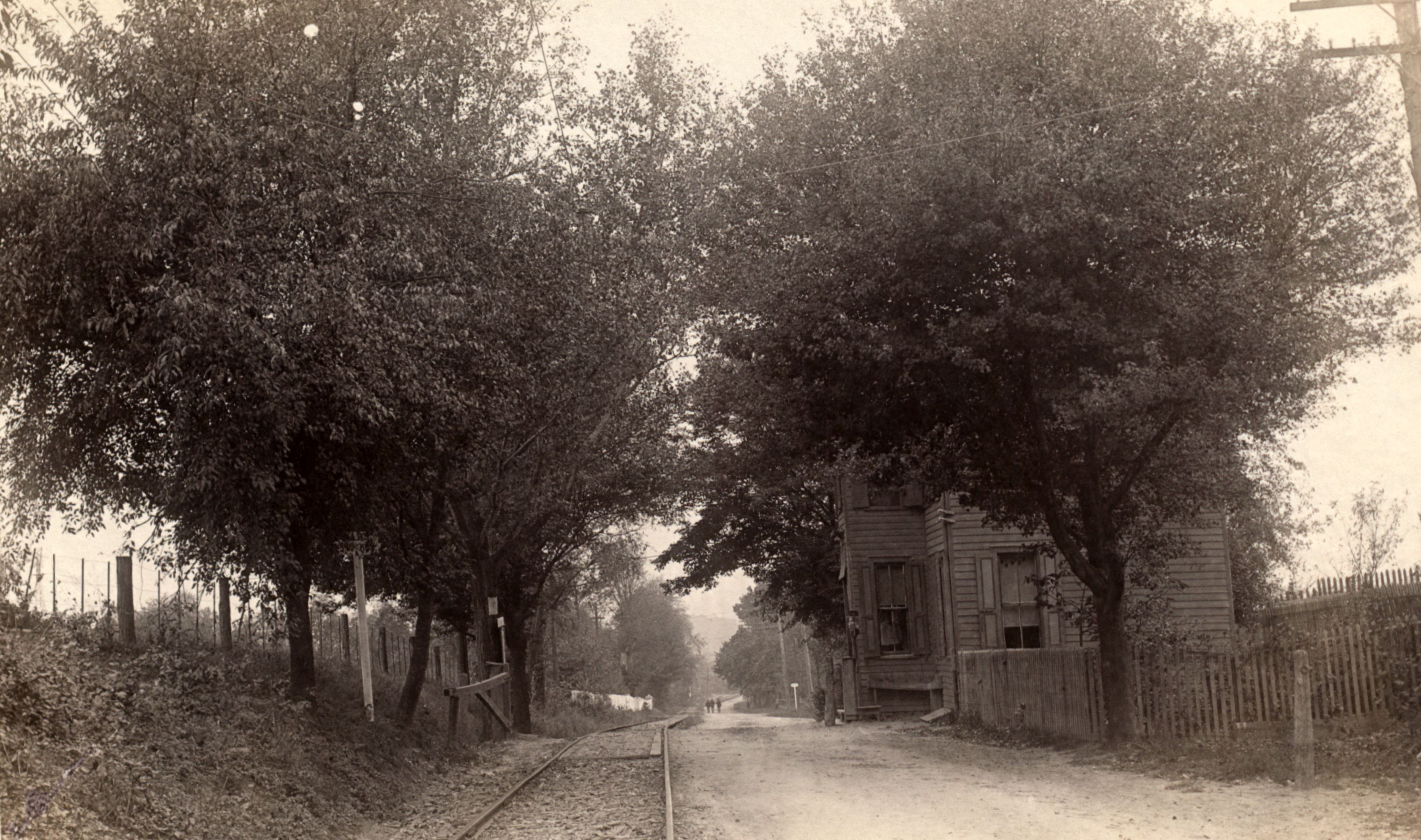
This photograph from ca. 1900 looks west along the Philadelphia & West Chester Traction Company's West Chester Pike (now Pennsylvania Route 3), which linked 38th and Market streets in Philadelphia and Newtown Square.
The company was organized in 1848 to build the turnpike, with the goal of improving a network of dirt roads connecting Philadelphia and West Chester. In 1859, the Delaware County Passenger Rail Road Company began operating a horse car trolley line along the turnpike that ran from 42nd Street in Philadelphia to Upper Darby. In 1895, the Philadelphia & West Chester Traction Company began offering trolley service running from 63rd Street in Philadelphia to Newtown Square, which was extended to West Chester in 1898.
According to text associated with the photograph, this image shows the fourth of five toll houses established along the length of the road, placing it in Llanerch, Pennsylvania. This would also place it at the heart of the Battle of Llanerch Crossing, an 1895 legal battle in which the Philadelphia & West Chester Traction Company successfully fought the efforts of the Pennsylvania Railroad, who had parked a locomotive in the direct path of the trolley line in advance of a planned competing service, the Philadelphia & Delaware County Passenger railroad, which would cross the West Chester Pike at Llanerch.
This item is part of Hagley Library's Red Arrow Lines photograph collection (Accession 1972.438). Red Arrow Lines was a division of the Philadelphia Suburban Transportation Company, a company formed in 1936 by the merger of two transportation companies, the Philadelphia & West Chester Traction Company and the Philadelphia & Garrettford Street Railway Company, both owned by Merritt H. Taylor.
Taylor's father, A. Merritt Taylor, had acquired the Philadelphia & West Chester Traction Company in 1899, and organized the Philadelphia & Garrettford Street Railway Company in 1904. The Taylor family expanded these networks of transportation into a large network of buses, streetcars, and high-speed rail that connected Philadelphia's suburbs to the city.
Over the 1960s, however Merritt H. Taylor, Jr.'s unwillingness to allow the Philadelphia Transportation Company to join competing companies in public-private regional transportation compacts that consolidated services or accepted public regulation in exchange for public subsidies and other benefits led to increased expenses, revenue losses, and reduced ridership. In 1970, the company's most profitable asset, the Red Arrow division was sold to SEPTA (the Southeastern Pennsylvania Transportation Authority, formed in 1963). The Philadelphia Transportation Company was then renamed the Bryn Mawr Group, Inc. and became a Florida real estate company

